These blue-collar storytellers electrify their tales with lunch-pail Les Pauls and trusty Telecasters that hit some British tube beasts and are tastefully spiced with varied stompboxes.
The Menzingers’ albums are storied time capsules. Starting in 2007 with teen angst and rebellion, they’ve refined and reshaped their narratives into self-reflective numbers that continue to balance melody and might. Their most-recent installment—2023’s Some of It Was True—was their eighth chapter that stares down aging with acceptance rather than anger. But don’t get it twisted, these rockers will still charge.
“This record just feels different for us,” Barnett explains. “It’s a really important one in our catalog, and a pivotal moment in our history. We have the liberty of our fans growing with us now, and after writing these lyrical songs about where we are in life, we decided to take other peoples’ stories and make something bigger out of it.” “It brought us back to our energetic side as a band,” May concurs. “We got to let loose, which is what drew us to the energy of being in a band in the first place. This is a live band—why shouldn’t we record live songs? As a result, we’re back to why we started this band in the first place.”
In support of Some of It Was True, the Philly crew toured the States and touched down in Nashville mid-November for a romper at the Marathon Music Works. Before their headlining set in Music City, both singing-guitarists Greg Barnett and Tom May welcomed PG’s Perry Bean onstage to converse about their setups. Barnett explained the pros and cons of being a left-handed player, while May divulged the inspiration for his loved Les Pauls. Both detailed why they prefer a two-amp rig, and each demoed the various sounds set off from their respective pedalboards.
Brought to you by D'Addario:
https://ddar.io/wykyk-rr
https://www.daddario.com/XPNDRR
'57 Knockoff
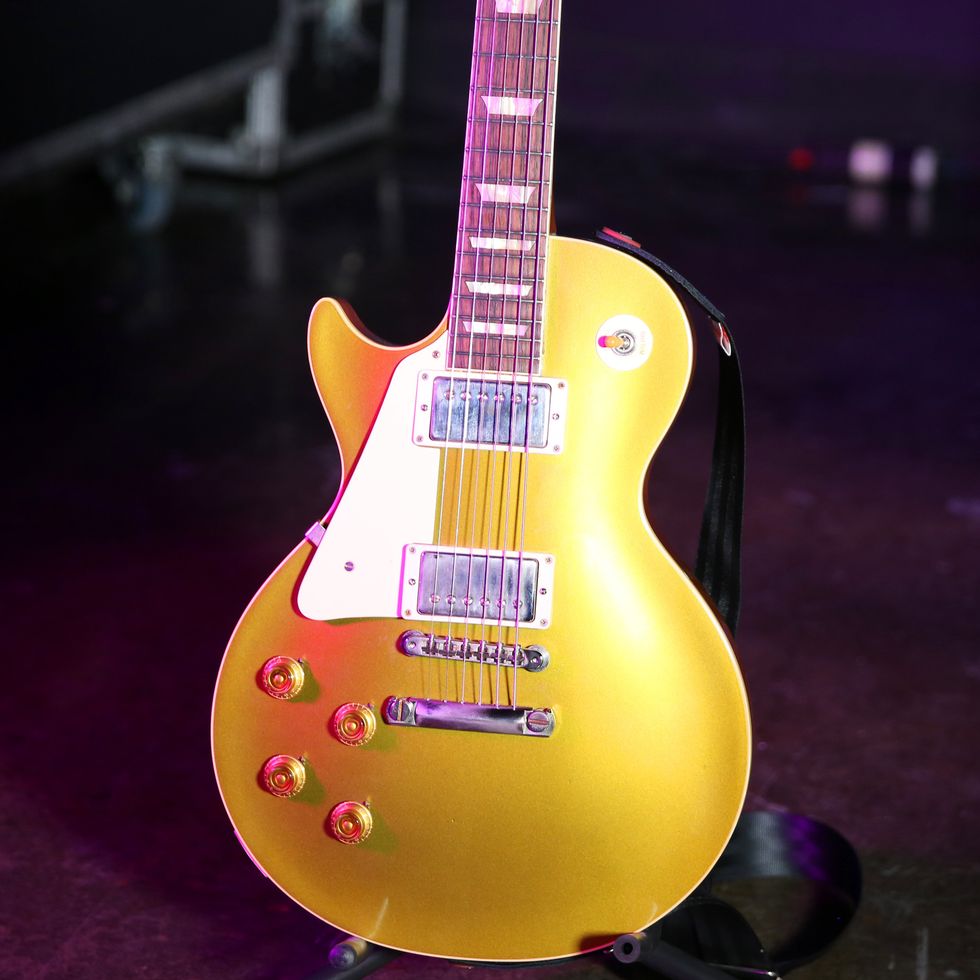
Cofrontman and guitarist Greg Barnett is a lefty, so his relationship with guitars has been a double-edged sword. On one hand, stores don’t often stock instruments to his picking orientation, however, finding a needle in a haystack has proven more fruitful than a righty’s quest since there’s more of a demand. But when he can’t find something in the secondary market, he’ll go straight to the source as he did when ordering this 2022 1957 Custom Shop Les Paul Goldtop reissue from HQ in Nashville, Tennessee. “This has pretty much become my number one touring guitar,” he says. “It’s all stock and I usually play half the set with it.”
All the guitars used by Barnett and May take Ernie Ball Nickel Wound Custom Gauge strings (.011–.052).
Just For Jawbreaker
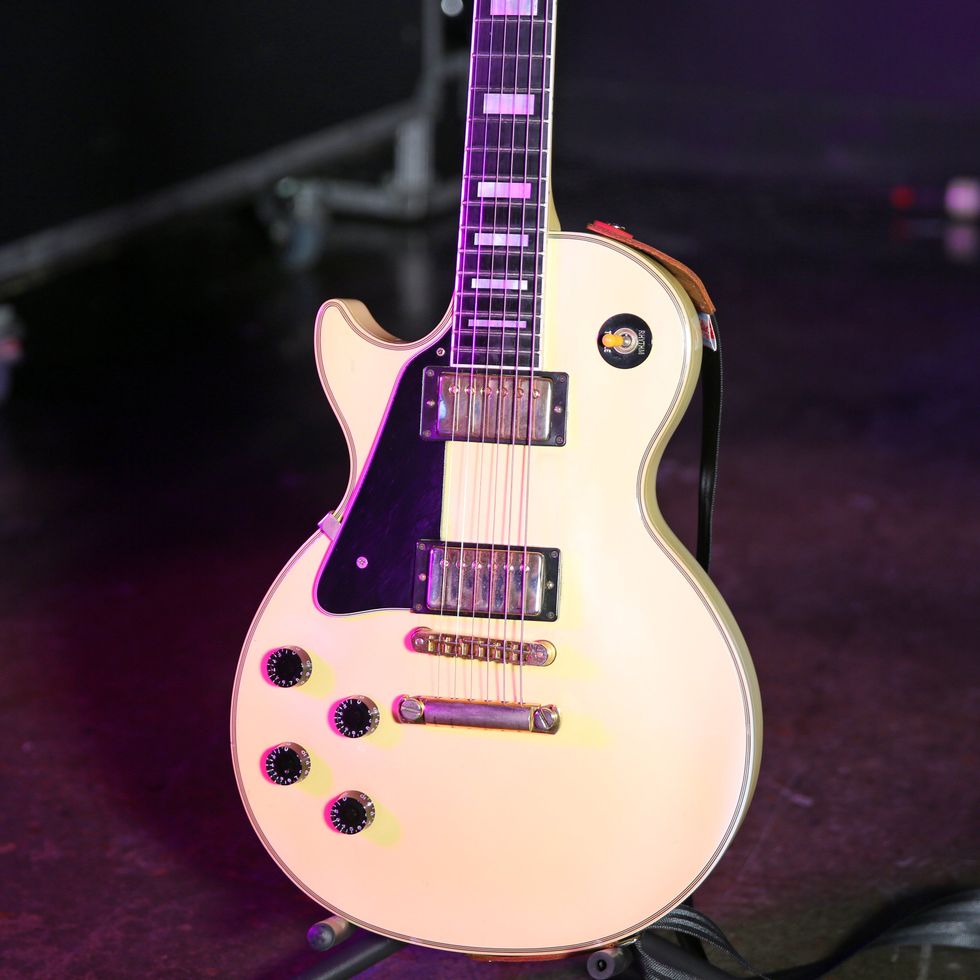
Barnett bought this grizzled 1992 Gibson Les Paul Custom while on tour. “We had just played Riot Fest with Jawbreaker the night before and I saw Blake Schwarzenbach playing a White Les Paul Custom and thought, ‘Damn I need one!’ We had the next day off in St. Louis and I saw one for sale. I hit the guy up and we drove the tour bus right to his house. He was so stoked!” Greg dropped in a set of Seymour Duncan Antiquity humbuckers and upgraded its pots.
Take a Bow!
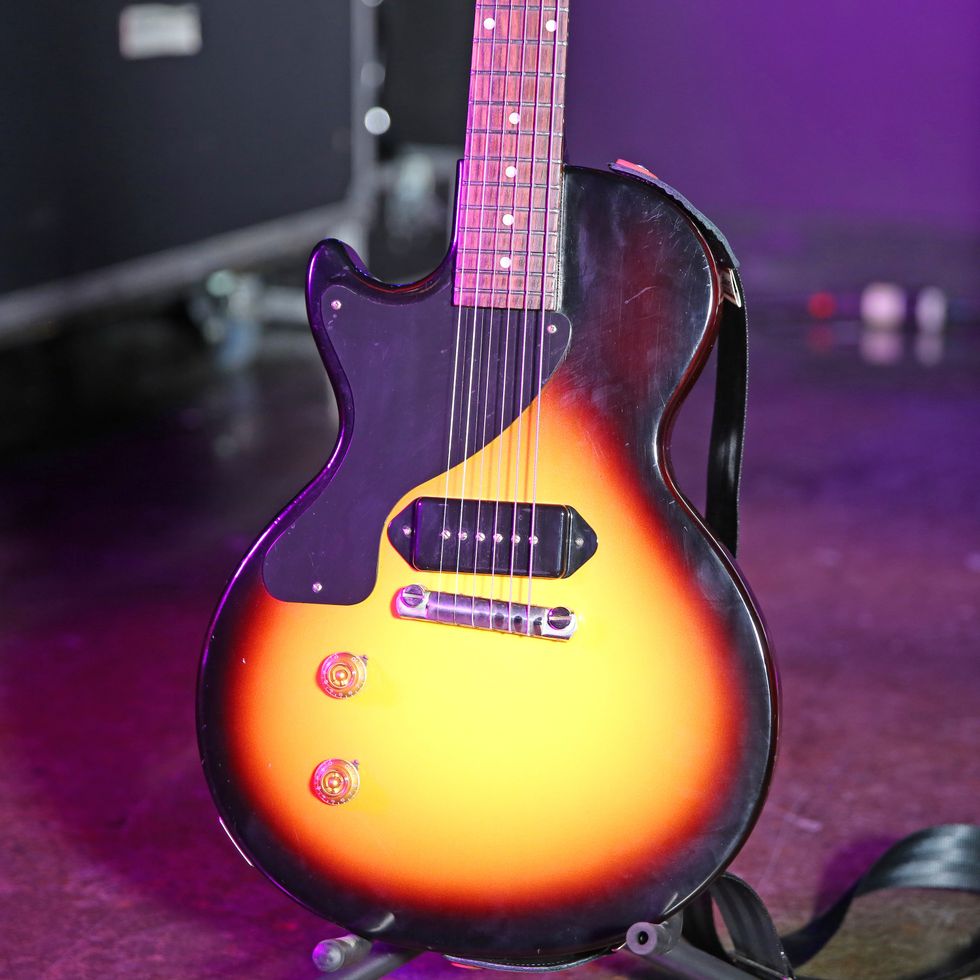
For a band that started in Scranton, Pennsylvania, it makes sense that one of their gear meccas is Russo Music in Philadelphia. And that’s where Barnett scooped this Gibson 1957 Custom Shop Les Paul Junior that’s all stock and was used exclusively during the band’s Nashville encore that included “Tellin’ Lies” and “Casey.”
The Waiting Is the Hardest Part
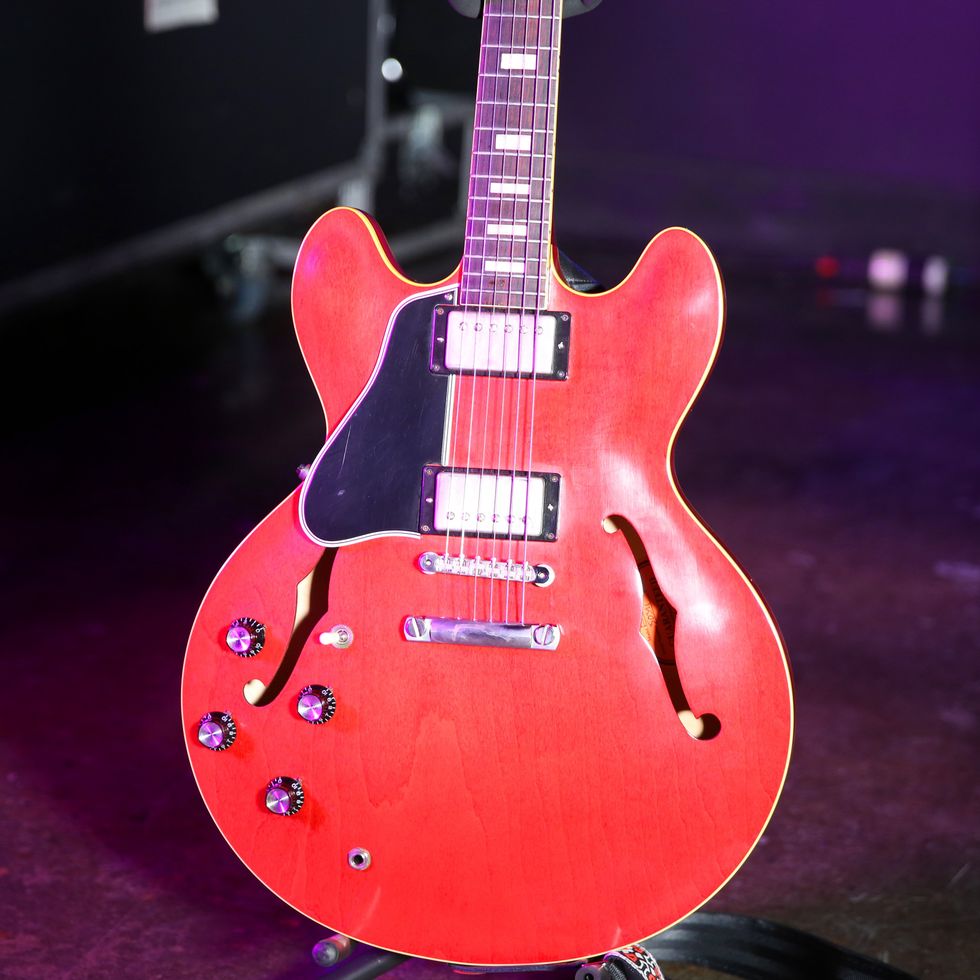
An Electric Spanish model from Gibson has been on Barnett’s bucket list. It took some time and online sleuthing, but he uncovered his dream ride—this 2015 Gibson Custom Shop 1964 ES-335—during a late-night surf of Reverb. It’s all stock. It can be heard specifically on “Come On Heartache” off of Some of It Was True.
Marshall Matters
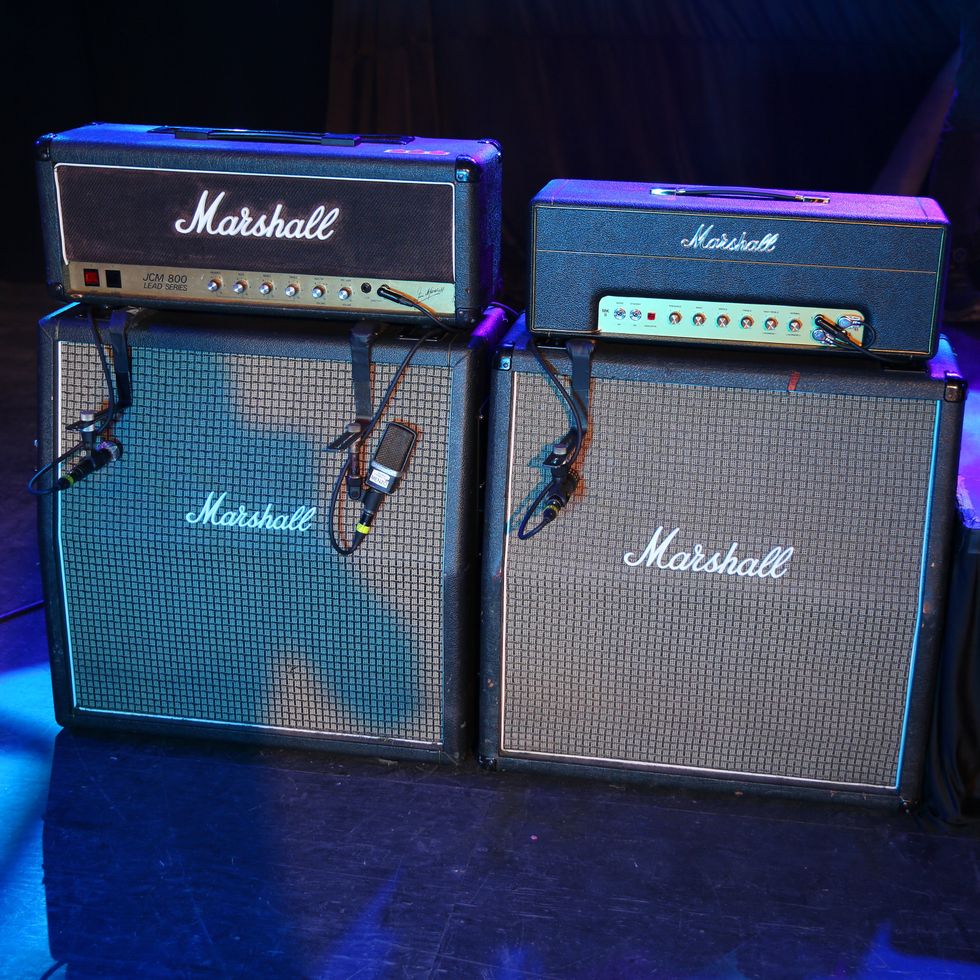
Barnett is a two-amp sort of player. The left side is his 100-watt 1985 Marshall JCM800 that was his first “pro” amp. He acquired it off Craigslist over a decade ago and “it’s been the most reliable piece of gear I’ve ever owned.” The right side of the equation is a 2023 Marshall JTM45 that represents the cleaner side of the twin Marshall blend.
Greg Barnett's Pedalboard
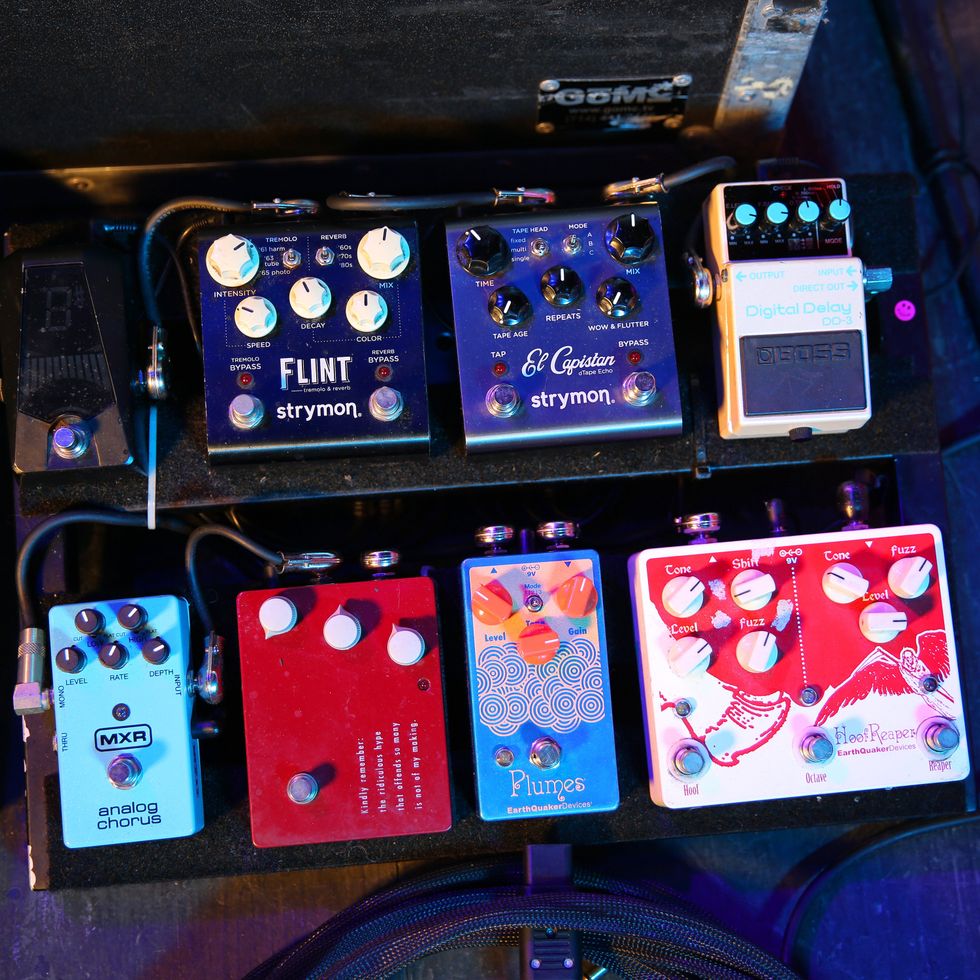
A Korg Pitchblack tuner is where the guitar hits the pedalboard. Barnett loves how much the EarthQuaker Devices Hoof Reaper’s Reaper side, that’s based on a 3-knob Bender-style fuzz, cuts through in a mix. It gets introduced for songs “Thick as Thieves” and “Rodent.”
The EarthQuaker Plumes pedal is engaged for all Barnett’s leads and solos. “I really back EQD for creating such high-quality pedals at an introductory price point,” he attests. “And, no, they didn’t pay me to say that!”
The Klon KTR works as a boost with the gain all the way down, to boost choruses and some heavier intro parts. The Boss DD-3 is from 1988 and has a “long chip.” It sounds incredible and Greg employs it for “Try.” “When we recorded the song, I layered a lot of feedback over the outro. To mimic that, I have the pedal set with the feedback almost all the way up. I let the first note oscillate into infinity and then try to create a bunch of different artifacts over it.”
The remaining three pedals include a MXR Analog Chorus, a Strymon Flint, and a Strymon El Capistan.
Everything You Always Wanted to Know About Guitar (*But Were Afraid to Ask)

Ever since Tom May saw John Carvalho of A Wilhelm Scream, Sheena Ozzella of Lemuria, and Scott Brigham of the Flatliners rock a walnut Gibson The Paul, he wanted one to join their outsider squad. He scored his 1981 Paul “Woody” from Emerald City Guitars in Seattle.
Finger-Lickin' Good
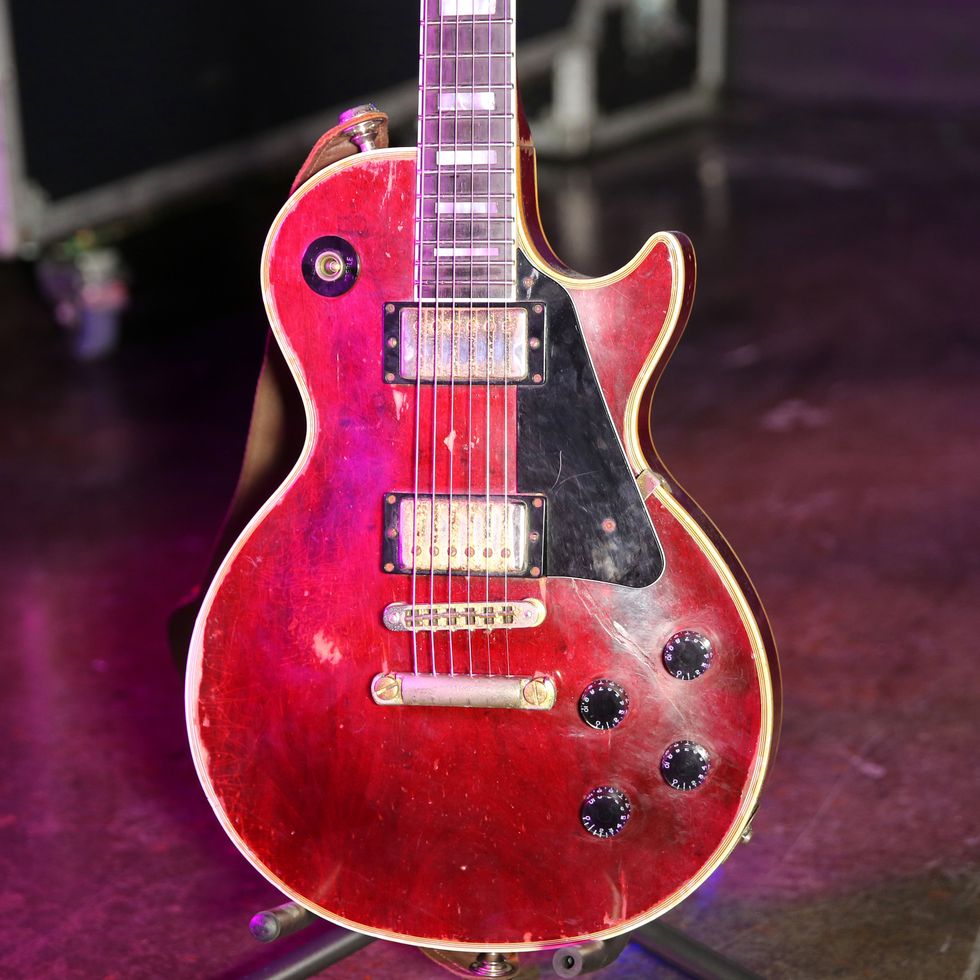
May’s “Tasty” 1982 Gibson Les Paul Custom was purchased from one of his guitar heroes, the Bouncing Souls’ Pete Steinkopf. Tom said Pete used it on the Souls’ first two albums (The Good, the Bad, and the Argyle and Maniacal Laughter) and it has been featured on the Menzingers’ work starting with 2014’s Rented World. It was nicknamed “Tasty” by May’s friend Kate Hiltz. Ironically enough, Kate and another friend opened a vegan diner in Philadelphia and called it The Tasty.
Monotrapa Uniflora

May’s 2023 Fender American Vintage II 1975 Telecaster Deluxe is named “Ghost Pipe” as it features a sticker of the peculiarly white parasitic plant that grows off nutrients from tree roots. It’s his newest addition and has already proven to be a steady steed that’s “the real one.”
Transatlantic Tones
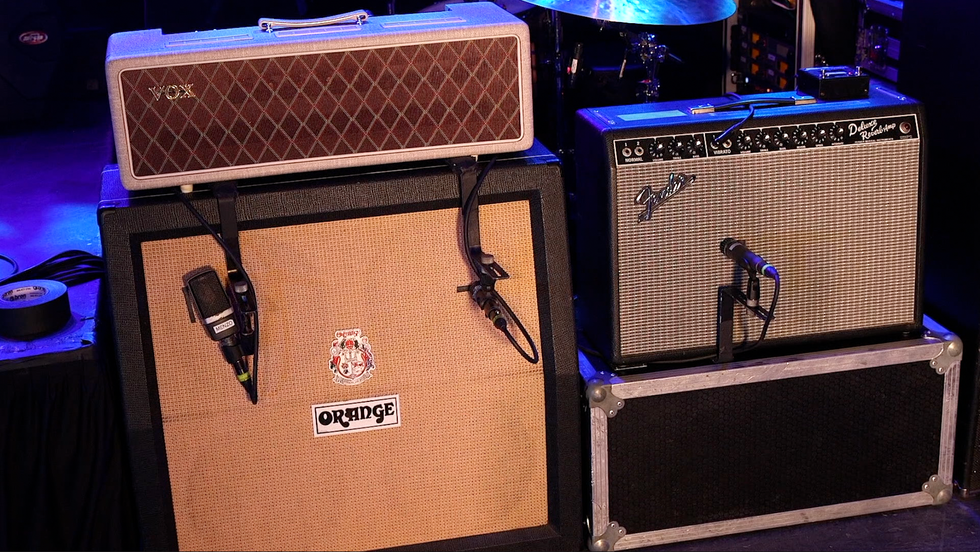
Tom has plugged into this Fender ’65 Deluxe Reverb (or a variation of it) on every record since After the Party and every single tour since 2017. British flavorings come from the handwired Vox AC30HWH that runs into an Orange 4x12. It’s loaded with a pair of stock Celestion Vintage 30s, and May replaced the other V30s with a couple of Celestion G12M Greenbacks.
Tom May's Pedalboard
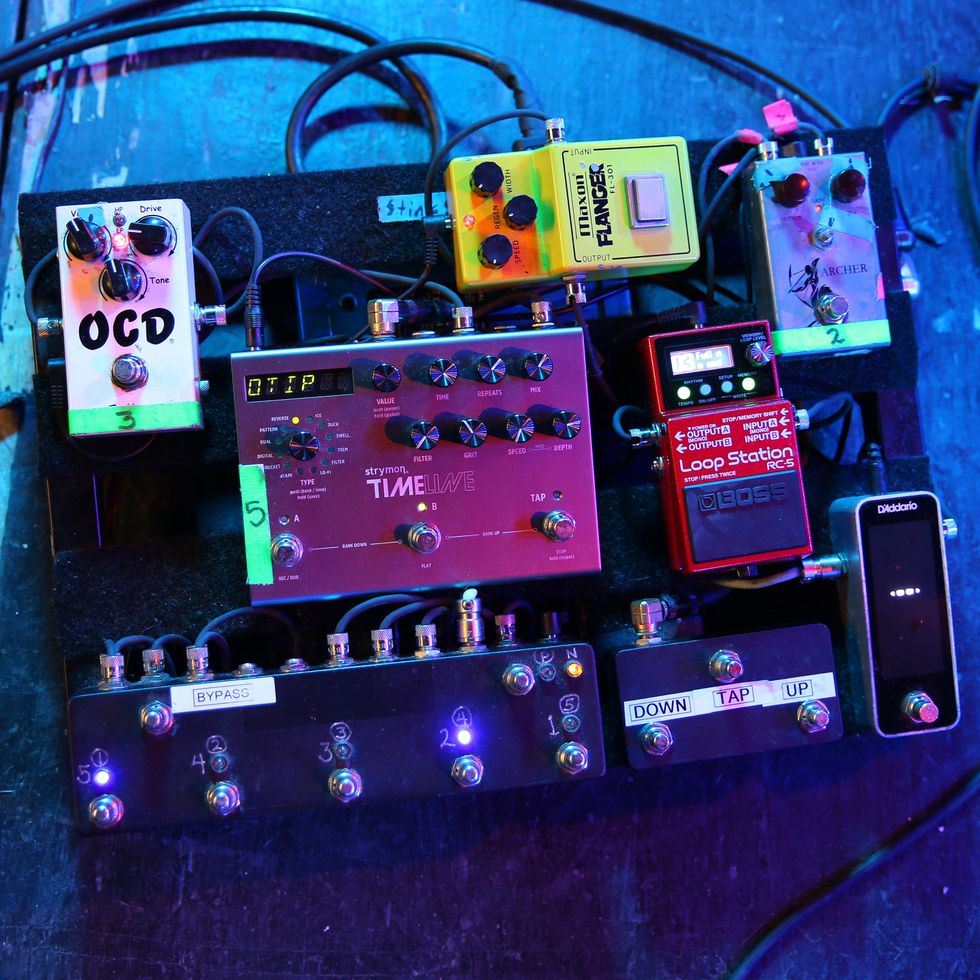
The J. Rockett Archer was a helpful suggestion from Greg, and it hasn’t left May’s pedalboard since the purchase (and even has two spares). It’s always on and May loves how it can attenuate his signal and highlights his more expressive playing.
He works out the Strymon TimeLine by utilizing nearly 10 settings throughout a set that ranges from a quick 100 ms bit to thicken up leads to a full reverse delay-signal-only mix preset for pad-sounding ambient layers. Even though he’s fine-tuned it to Menzingers’ sets, he’s still discovering new sounds with it.
The Boss RC-5 Loop Station launches a little sample they use: “Incredibly powerful pedal I use for one-trick.”
The 1980s Maxon FL-301 Flanger is close to the one used in the verse guitar parts of “There’s No Place in This World for Me.” “I used one in the studio as a half joke after having a bit of a bout adding flanger to Some of It Was True, but sure enough it made it,” says May. He bought it from a small shop in Paris, Guitar Street on 24 Rue Victor Massé.
And while it made the video, the Fulltone OCD has since been retired from touring duties.
Finally, the 7-channel American Looper allows May to instantly switch between effects combinations with one toe kick.
Shop the Menzingers' Rig

2022 1957 Custom Shop Les Paul Goldtop Reissue
Ernie Ball Nickel Wound Custom Gauge Strings
Seymour Duncan Antiquity Humbuckers
2015 Gibson Custom Shop 1964 ES-335
1985 Marshall JCM800
2023 Marshall JTM45
Korg Pitchblack Tuner
EarthQuaker Devices Hoof Reaper
EarthQuaker Devices Plumes
MXR Analog Chorus
Strymon Flint
Strymon El Capistan
2023 Fender American Vintage II 1975 Telecaster Deluxe
Fender ’65 Deluxe Reverb
Orange 4x12
Celestion Vintage 30s
Celestion G12M Greenbacks
J Rockett Archer
Strymon TimeLine
Boss RC-5
Fulltone OCD





![Rig Rundown: AFI [2025]](https://www.premierguitar.com/media-library/youtube.jpg?id=62064741&width=1245&height=700&quality=70&coordinates=0%2C0%2C0%2C0)








 Zach loves his Sovtek Mig 60 head, which he plays through a cab he built himself at a pipe-organ shop in Denver. Every glue joint is lined with thin leather for maximum air tightness, and it’s stocked with Celestion G12M Greenback speakers.
Zach loves his Sovtek Mig 60 head, which he plays through a cab he built himself at a pipe-organ shop in Denver. Every glue joint is lined with thin leather for maximum air tightness, and it’s stocked with Celestion G12M Greenback speakers.












![Devon Eisenbarger [Katy Perry] Rig Rundown](https://www.premierguitar.com/media-library/youtube.jpg?id=61774583&width=1245&height=700&quality=70&coordinates=0%2C0%2C0%2C0)









































